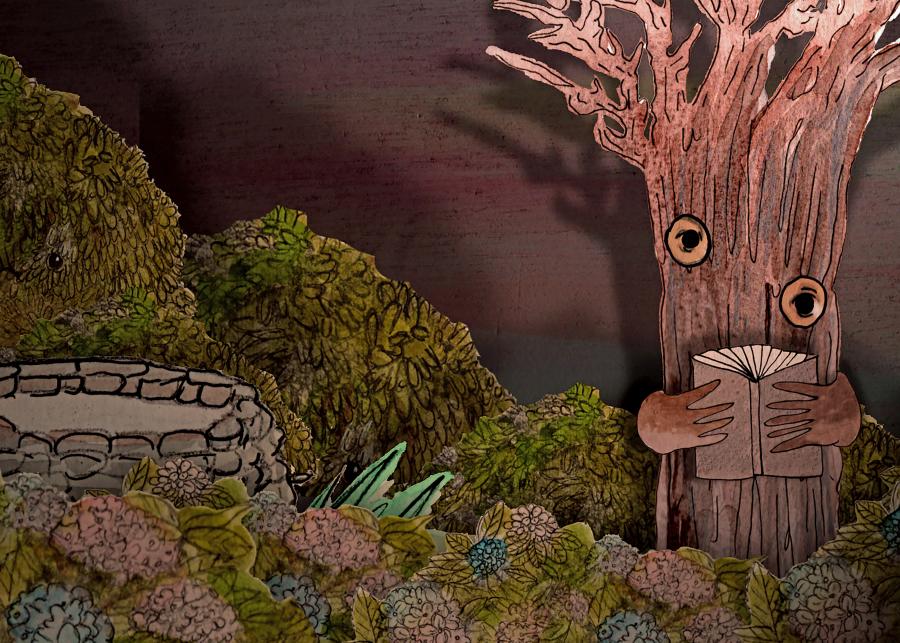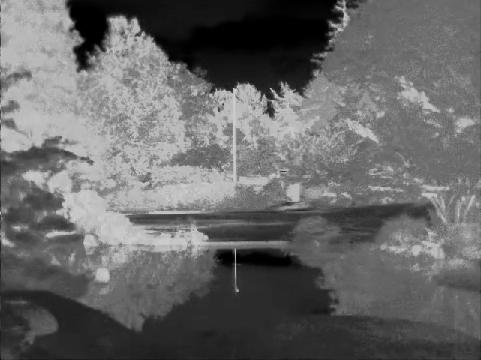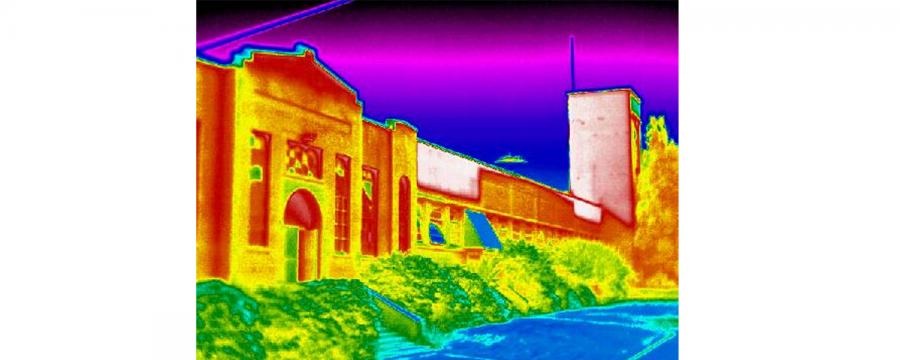
Credit: Cindy Mochizuki, Autumn Strawberry, 2021, animation still (detail). Photo courtesy of artist.
With New Multimedia exhibitions, Two Artists Make Invisible Japanese Canadian Histories Visible Again
Surrey Art Gallery presents two solo exhibitions this summer: Cindy Mochizuki: Autumn Strawberry and Henry Tsang: Hastings Park from June 26 to August 28, 2021.
Surrey, BC – Surrey Art Gallery presents two solo exhibitions this summer: Cindy Mochizuki: Autumn Strawberry and Henry Tsang: Hastings Park from June 26 to August 28. The artists will talk about their work in an online discussion on Saturday, July 17 at 7 p.m. on Facebook Live and YouTube. The conversation will be available for replay after the event.
Cindy Mochizuki’s multimedia installation takes visitors back in time to Japanese Canadian farms in the twentieth century prior to WWII. Autumn Strawberry emerges from her artist residency at Surrey Art Gallery in 2019. Mochizuki met with dozens of Nisei and Sansei (second and third generation) Japanese Canadians whose parents and grandparents had owned or worked on agricultural farms across the Fraser Valley.
These sites included Strawberry Hill/Surrey, Mission, Haney, Langley, and Maple Ridge. Combining archival research with these collected stories of farm life, Autumn Strawberry weaves together a series of short vignettes imagined through a 60-minute hand-painted and digital animation projected onto the Gallery’s walls and screens. Visitors will see life on these farms—women pickling, children polishing chicken eggs, and men picking berries. Mochizuki combines real with imagined characters and storylines in keeping with her art practice of historical re-creation.
“I’m grateful for the work that has already been done inside the Japanese Canadian community by those who have documented the Fraser Valley history of Japanese Canadians so carefully and for those who came to share their stories with me while in residence,” says Mochizuki. “Animation and its ability to blend both story and historical facts provides another lens to revisit familial histories and open other narratives inside this work.”
In addition to the large-scale projections, sculptural tree stumps and pieces of barn flats are scattered throughout the Gallery floor.
Visitors are invited to peek inside and watch animations on smaller projections that move from everyday farm life to a creaturely, future world of trees and lively insects. The trees’ ghostly presence recalls the “dream of riches” that motivated many Isseis (first generation Japanese immigrants) to come to Canada, while also bringing to light the harsh reality of their participation in deforestation processes (tree stumping) to clear the land so they could plant their berry fields.
These farms would later lie abandoned and then sold to support the construction of their internment camps during WWII when the government forcibly removed Japanese Canadians from the west coast of British Columbia.
Henry Tsang: Hastings Park picks up where Mochizuki leaves off. His multimedia installation presents photographs and projections of four buildings at Hastings Park in Vancouver, where, in 1942, roughly 8000 Japanese Canadians were marshalled and detained prior to being sent to internment and labour camps in the BC interior, Alberta, Manitoba, and Ontario. Among the four buildings is the Livestock Building—a place associated nowadays with the Pacific National Exhibition’s popular pig races and petting zoo.
Tsang used a thermal imaging camera to create his images based in part on the compositions and staging of Leonard Frank’s documentary photographs of the Japanese Canadian internment in this temporary incarceration site. A thermal imaging camera is typically used in the construction industry to display differences in temperature by detecting light rays that are invisible to the human eye. Such photographs can reveal leaks or cracks in a building.
Tsang says, “In using this camera, I’m asking the buildings to remember when they housed 8000 people. This camera exposes not only the current condition of the buildings, but also the past and hidden histories inscribed within. It can see things we can’t.”
Mochizuki and Tsang take camera and projection technologies and use them in unexpected ways to illuminate histories and everyday moments. Surrey Art Gallery Curator Jordan Strom says, “They show how images, and thus histories, are concealed and revealed. Uniting the past and the present, history and memory, these artists have created work that speaks powerfully to our current moment of social crisis, anti-Asian racism, agricultural history, and food security.”
The Gallery would like to acknowledge its community partners for these exhibitions: Powell Street Festival in Vancouver and Nikkei National Museum & Cultural Centre in Burnaby.
The other exhibition at Surrey Art Gallery this summer is ARTS 2021, a yearly partnership with the Arts Council of Surrey that showcases juried artworks in all types of media by local artists (June 5–August 28).
About Cindy Mochizuki
Cindy Mochizuki creates multimedia installation, audio fiction, performance, animation, and drawings. Her works explore the manifestation of story and its relationship to site-specificity, invisible histories, archives, and memory work. She has exhibited, performed, and screened her work in Canada, US, Australia, and Japan.
Recent exhibitions include the Vancouver Art Gallery, Burrard Arts Foundation, Richmond Art Gallery, Frye Art Museum, and Yonago City Museum. She was the recipient of the Vancouver’s Mayor’s Arts Award in New Media and Film (2015) and the Jack and Doris Shadbolt Foundation for the Visual Arts VIVA Award (2020). cindymochizuki.com
About Henry Tsang
Henry Tsang is an artist and occasional curator based on the unceded territories of the xʷməθkʷəy̓əm (Musqueam), Sḵwx̱wú7mesh (Squamish) and səlil̓ilw̓ətaʔɬ (Tsleil-Waututh) peoples. His projects explore the spatial politics of history, language, community, food, and cultural translation in relationship to place. These take the form of gallery exhibitions, pop-up street food offerings, 360 video walking tours, curated dinners, ephemeral and permanent public art, employing video, photography, language, interactive media, food, and convivial events.
Projects include 360 Riot Walk, a 360 degree video walking tour of the 1907 Anti-Asian Riots in Vancouver, Canada, and Welcome to the Land of Light, a public artwork along Vancouver's seawall that underscores the 19th century trade language Chinook Jargon and the English that replaced it. Henry teaches at Emily Carr University of Art & Design. henrytsang.ca
Contact info
Charlene Back
Communications Coordinator
charlene.back@surrey.ca
604-591-4205


